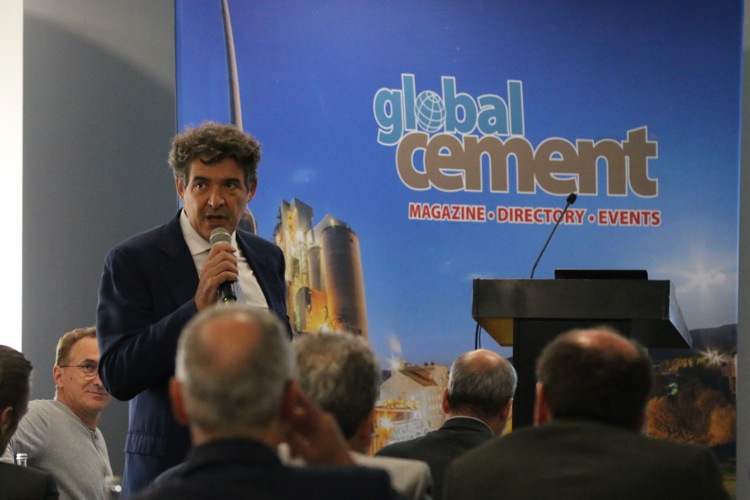The 15th edition of Global CemFuels Conference and Exhibition has concluded, the biggest event in the world dedicated to alternative fuel for the cement industry. Many topics were discussed, all driven by the ambitious goal of combining strengths in order to find the most efficient strategies to progressively reduce CO2 emissions in the sector, from the utilization of CSS to the recovery and storage of carbon, from the development of new technologies to the point where we arrive at the production of carbon-free cement, with zero emissions in 2050.
Cement, an essential product in construction and infrastructures, is a product indispensable to the economy of any Country. But its production requires important energy resources and as a result, high costs, both for the companies and also for the environment.
30% is for fuel costs, due to the huge expenditure of electrical and thermal energy necessary for the process: in the ovens, where the raw materials are burnt to create cement, it is necessary to reach very high temperatures, over 1.500°C. And still today, to achieve this in Italy, the most utilized fuel is pet-coke, a derivative of petroleum, imported mostly from Mexico, the cost of which has tripled over this last year.
To substitute a part of pet-coke in the ovens of the cement factories with an alternative fuel or Secondary Solid fuels (CSS), derived from waste that is not dangerous and not renewable in other ways is an economic and ecological solution. This alone would make a significant contribution to the reduction in process costs in the cement factories and would reduce CO2 emissions by more than 10% (Fonte FederBeton).
We must also add to this the fact that these fuels also improve the efficiency of the process. Some of them favour the clincherization and the parts that in other situations would become contaminated, in the ovens they bond with the clinkers in a definitive way without leaving any residue. Important research is also being carried out to discover combustion techniques that are even more efficient so as to arrive at the ambitious goal of substituting 100% of fuels with renewables.
Perspectives on the development of alternative fuels in cement plants.
In Europe the use of alternative fuels in cement factories is a widely used practice, and is recognised as the Best Available Technique (BAT, Best Available Technique). In the more developed Countries, the rate of thermal substitutions of fossil fuels, the CSS in cement factories has reached 66% in Germany, 79% in Austria, 46% in France and 33% in Spain. In Italy, instead, the percentage has stopped at 19.7%. What are the principal obstacles to this change in our Country? First and foremost are the problems related to bureaucracy, to which must be added the fears of public opinion that mistakenly think that the burning of alternative fuels in the ovens will make the productive process more polluting. The cement factories that utilize CSS are on the contrary obliged to maintain even lower levels of emissions and their use is carried out in conditions that are totally safe.
The importance of a joint commitment in the whole system: our intervention in the panel “Trends in the markets and the technologies for Alternative Fuels”
Entsorga also took part in Global CemFuels, intervening in the discussion panel regarding the analysis of trends in the markets and the technologies for Alternative Fuels and we underlined the importance of a joint commitment in the whole European system so as to incentify the use of alternative fuels in all cement factories.
“The real challenge today is not that of reaching the complete substitution of renewable fuels in a few virtuous plants, but to raise the level of their use in general in all the cement factories – as was underlined by our president, P.P. Cella – To achieve this however, it is necessary that the whole system become sustainable. A significant percentage of the emissions in the sector for example, is linked to the transport of raw materials, that today takes place principally by road and by ship: it is therefore of the highest importance to ensure that also the supply of alternative fuels comes from nearby waste treatment plants, on a local level. Hence the importance of a forward looking planning, that involves local administrations. It is then necessary to plan adequate infrastructures for the transport of fuels and reinforce the logistics sector. As well as working long term to form public opinion, by destroying prejudices and false myths, we need to change our approach at the level of the “ecosystem” and not only of a single sector, if not, it will be difficult to even hope to reach the ambitious results that we have set”.
Alternative Fuels are a source of energy at zero kilometres, a precious opportunity in terms of the circular economy and energy saving. The time is ripe and the technologies are available, we need to accelerate their development. Especially in a time of energy crisis as we are living now, in which fuel costs are escalating exponentially. Especially in a time of crisis in raw materials like the present one when there is the threat of a return to carbon.

